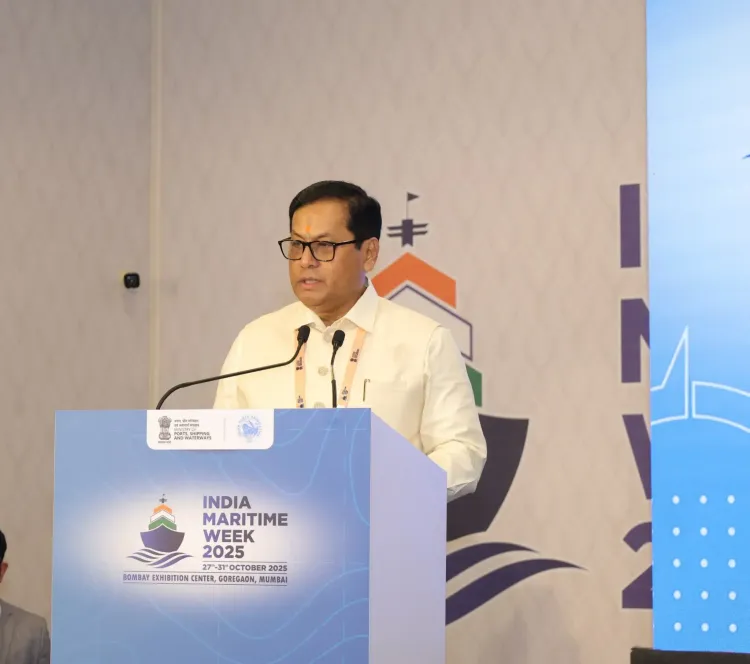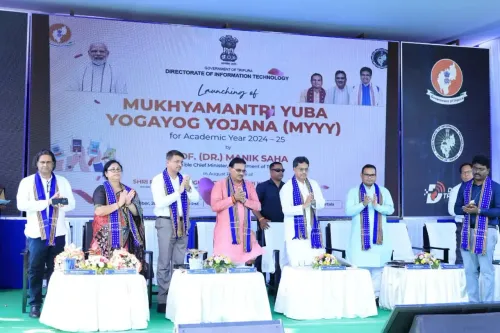Can India Achieve a 70% Reduction in Carbon Emissions per Tonne of Cargo by 2047?

Synopsis
Key Takeaways
- India plans to cut carbon emissions in maritime transport by 30% by 2030 and 70% by 2047.
- Key initiatives focus on sustainability and innovation.
- Ports are being developed as green hydrogen hubs.
- India aims to become a leader in green shipping corridors.
- Strategic international partnerships are being formed to enhance investments.
Mumbai, Oct 28 (NationPress) The maritime industry of India is a vital component of its economy, facilitating over 95 percent of the country's trade volume via sea routes, Union Minister Sarbananda Sonowal remarked on Tuesday. As part of its commitment to achieving Net Zero by 2070, India plans to cut carbon emissions per tonne of cargo by 30 percent by 2030 and 70 percent by 2047, positioning the sector as a pivotal player in climate initiatives.
Speaking at the ‘India Maritime Week (IMW) 2025’ in Mumbai, Sonowal underscored India's steadfast dedication to forging a sustainable and resilient maritime future.
“On Green Maritime Day, we celebrate our collective determination to create a cleaner and more sustainable future for global shipping,” the minister stated during the event.
He pointed out that key initiatives such as the Sagarmala Programme, Maritime India Vision 2030, Harit Sagar Guidelines, and the Maritime Amrit Kaal Vision 2047 emphasize sustainability, innovation, and climate accountability at the forefront of India's maritime evolution.
Through the National Green Hydrogen Mission, India has identified VOC, Paradip, and Deendayal Ports as hubs for green hydrogen, establishing a foundation for a clean fuel economy.
The nation has announced over 12 million metric tonnes of green hydrogen-based e-fuel capacity, with ports becoming central to production, bunkering, and exports, thus fueling industrial advancement and generating green employment.
“As we aim for Amrit Kaal 2047, our ambition extends beyond expanding maritime capacity to ensuring it is greener, smarter, and more resilient,” Sonowal added.
“With our distinct geographic positioning along major global trade routes, India is set to become a center for green shipping corridors, linking domestic and international markets through clean energy trade,” he emphasized.
During the session, five significant reports were unveiled, focusing on green hydrogen, e-fuels, zero-emission trucking, pollution control, and green port performance metrics.
“Our unique geography along key global trade routes positions India to become a hub for green shipping corridors, facilitating connections between domestic and international markets via clean energy trade. To seize this opportunity, India has initiated Green and Digital Shipping Corridors (GDSCs) with Singapore and the Netherlands. These collaborations are set to enhance investments and bolster India's role as a bridge between global trade and sustainable growth,” the minister noted.









